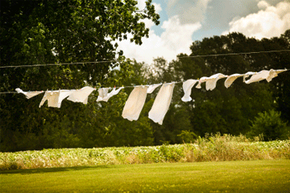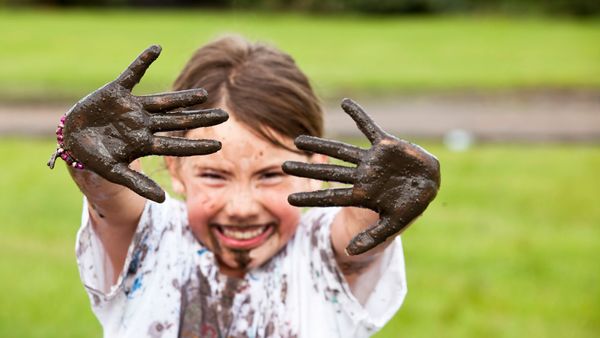While bleach can play a role in keeping your whites white, it can't do it alone. For optimal results, you're going to have to wash your whites differently -- and, of course, separately -- from the way you wash your colors.
So the first step, always, is to sort your whites from your colors. Color is not the only consideration, though, in sorting. You also want to take into account:
- Care tags: Can you wash it? At what temperature? Can you use bleach?
- Hardy vs. delicate fabrics: Is the regular, permanent press or gentle cycle best?
- Dirtiness: Is the item very dirty or practically clean? You don't want dirt from a white work shirt depositing on a nearly perfect white blouse.
Once you have your clothing sorted by color, temperature, wash cycle and filth level, you'll probably find that your largest pile is lightly soiled, machine-washable and will do fine on permanent press. This is your standard load of whites, and it should come out just fine if you follow a few simple rules.
Temperature
Lots of us have abandoned hot water for cool or cold in a quest to reduce energy use. But it turns out what's better for the environment isn't always better for your clothes (or your health, since it's the hot water wash that kills bacteria left in your machine). When it comes to keeping whites white, the hotter the water the better. Of course, not all fabrics should be washed on hot, since they could shrink or become misshapen, so you'll have to make adjustments based on the instructions on the care label.
Additives
Aside from temperature, the other big consideration here is what you should -- or should not -- add to the water. Bleach is probably the most common additive to the white load, and that's not necessarily wrong. Bleach does help to whiten, and it has the extra benefit of disinfecting. There are a few of problems with bleach, though. First, the chlorine kind can be toxic and irritating for sensitive skin. Second, if you use too much of it, it can actually end up turning your clothes a bit yellow or gray, so you need to measure very carefully. Third, both chlorine and oxygen bleaches can weaken fabrics so they're more likely to develop tears, fraying or holes.
If you find bleach works well for you, consider using half the normal amount of bleach and supplementing it with an equal amount of baking soda, which can help the bleach whiten better.
If you're looking for alternatives to bleach that don't have the drawbacks, you've got a few options. Lemon juice, hydrogen peroxide and baking soda all have gentle whitening qualities, and there's a surprising one, too: dye. At art stores and drug stores, you can often find white dye that, when added to the laundry, can help restore your whites to their original glory.
Now, this is all great for that white dress, but what about the white T-shirt with the green stripes on it?
For white items with some color, a few changes are in order ...


